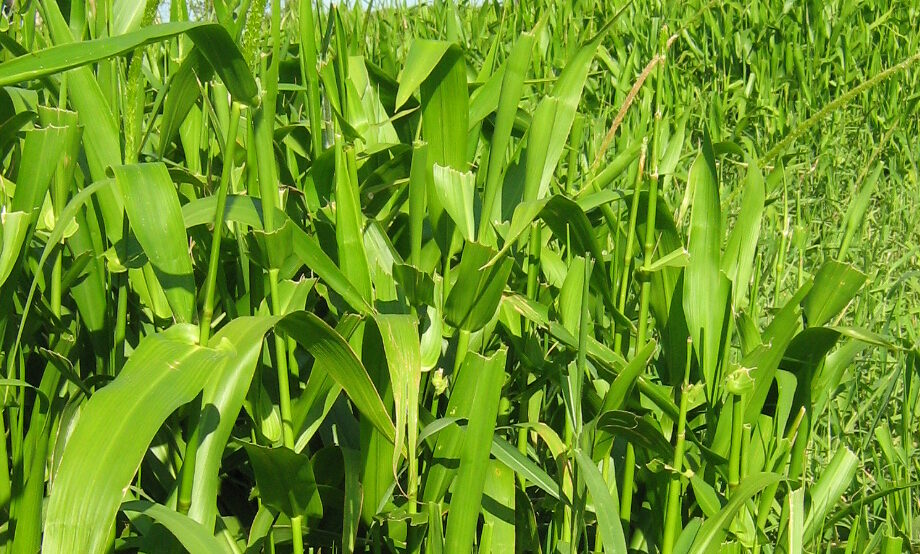The Problem with Hymenachne
Native to South America, Hymenachne was introduced as a ponded pasture grass for cattle fodder. However this plant is highly invasive invading lagoons, wetlands, rivers, creeks and table drains. It interferes with the function of irrigation, infrastructure, recreational activities and wildlife habitats. It is spread through seeds and stem fragments dispersed by water, waterbirds and contaminated stock feed.
This weed has the potential to be confused with the native Hymenachne, Hymenachne acutigluma. The difference is the exotic introduced species has a distinctive stem-clasping leaf base, where as the native Hymenachne does not. The native species is a smaller tropical species that does not grow south of Mackay.
Hymenachne amplexicaulis is a Weed Of National Significance and is also Restricted Matter – Category 3 under the Biosecurity Act 2014. This means that it cannot be distributed or disposed of in any way.
The Plant
- Hymenachne amplexicaulis is a perennial grass growing to 2.5 meters in height.
- The leaf sheath strongly clasps at base with the blades 10 to 45 cm in length by 3-6 cm wide. Hairy at the margins and has light coloured veins.
- The seed heads are 20 to 40 cm in length and are in a cylindrical, spike like arrangement.
References
- The State of Queensland Department of Agriculture and Fisheries Hymenachne or olive hymenachne fact sheet
- Fact sheet
